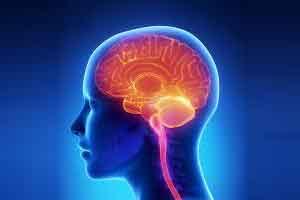- Home
- Editorial
- News
- Practice Guidelines
- Anesthesiology Guidelines
- Cancer Guidelines
- Cardiac Sciences Guidelines
- Critical Care Guidelines
- Dentistry Guidelines
- Dermatology Guidelines
- Diabetes and Endo Guidelines
- Diagnostics Guidelines
- ENT Guidelines
- Featured Practice Guidelines
- Gastroenterology Guidelines
- Geriatrics Guidelines
- Medicine Guidelines
- Nephrology Guidelines
- Neurosciences Guidelines
- Obs and Gynae Guidelines
- Ophthalmology Guidelines
- Orthopaedics Guidelines
- Paediatrics Guidelines
- Psychiatry Guidelines
- Pulmonology Guidelines
- Radiology Guidelines
- Surgery Guidelines
- Urology Guidelines
Altered DNA linked to new brain disorder identified

New York : A team of international researchers has identified the genetic mutations involved in a rare, new and unnamed neurological disorder that emerged in siblings of two families from Pakistan and Oman.
"The new neuro genetic disorder due to mutations in GPT2," said Eric Morrow, Associate Professor at Brown University, US.
The GPT2 gene is expressed in the nucleus of cells. The mutations cause the developing brains without bio synthetic abilities to grow properly, and to deficits in metabolites that could help prevent degeneration, the study said.
The team began the investigation more than five years ago when they were studying two families in Pakistan and Oman with children whose symptoms included below-normal postnatal brain growth, intellectual disability and progressively worsening motor problems.
The children were able to walk by age of 3, yet a majority lost that ability later as motor control diminished in their legs, as a condition called spastic paraplegia emerged.
Spastic paraplegia is generally considered to involve a neuro degenerative cause, Morrow said.
The team traced a genetic mutation to chromosome 16 and identified two specific mutations in GPT2.
Further, to learn how the mutations could cause the disease, the team created models in which the mutations were induced in human cells and also in mice.
Like the children with GPT2 mutations, developing mice with the mutations also showed reduced neural and brain growth.
While, the human cells showed that mutations led to reduced enzyme activity, the mutant mice engineered with a GPT2 enzyme deficiency showed abnormal brain metabolism.
In addition, when the researchers looked at the neurons of developing mice, they found that ones with the GPT2 mutations produced fewer synapses, the connections between neurons that make up brain circuits.
The researchers conducted large-scale profiling of metabolites in the brains of the mutant mice.
They found in the GPT2 mutant mice abnormal metabolite levels related to amino acid metabolism, and pathways required for protecting neuron health.
The deficiencies in these neuro protective metabolites, Morrow said, might explain why the disease appears to have a degenerative course.
The findings were published in the journal Proceedings of the National Academy of Sciences.

Disclaimer: This site is primarily intended for healthcare professionals. Any content/information on this website does not replace the advice of medical and/or health professionals and should not be construed as medical/diagnostic advice/endorsement or prescription. Use of this site is subject to our terms of use, privacy policy, advertisement policy. © 2020 Minerva Medical Treatment Pvt Ltd